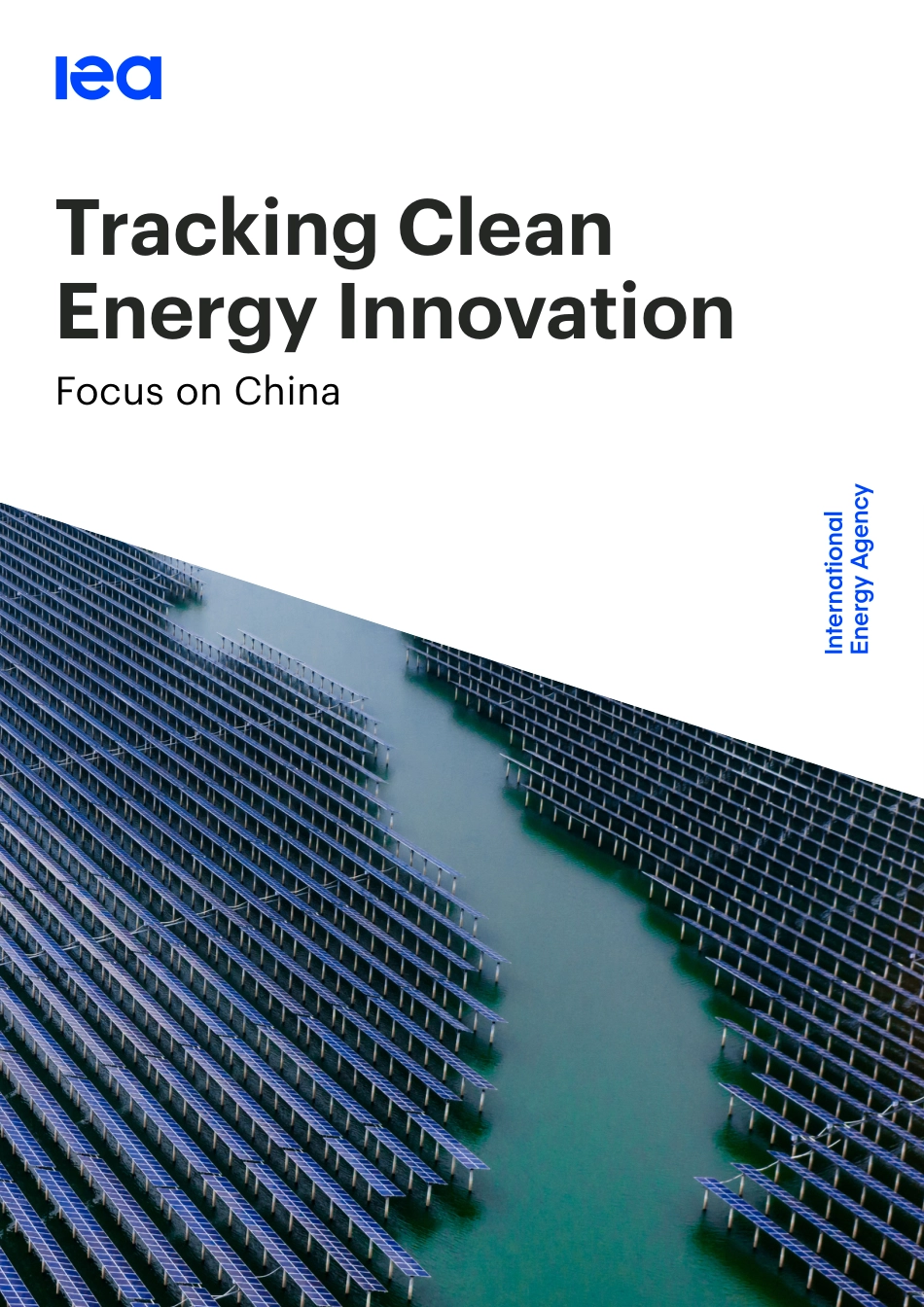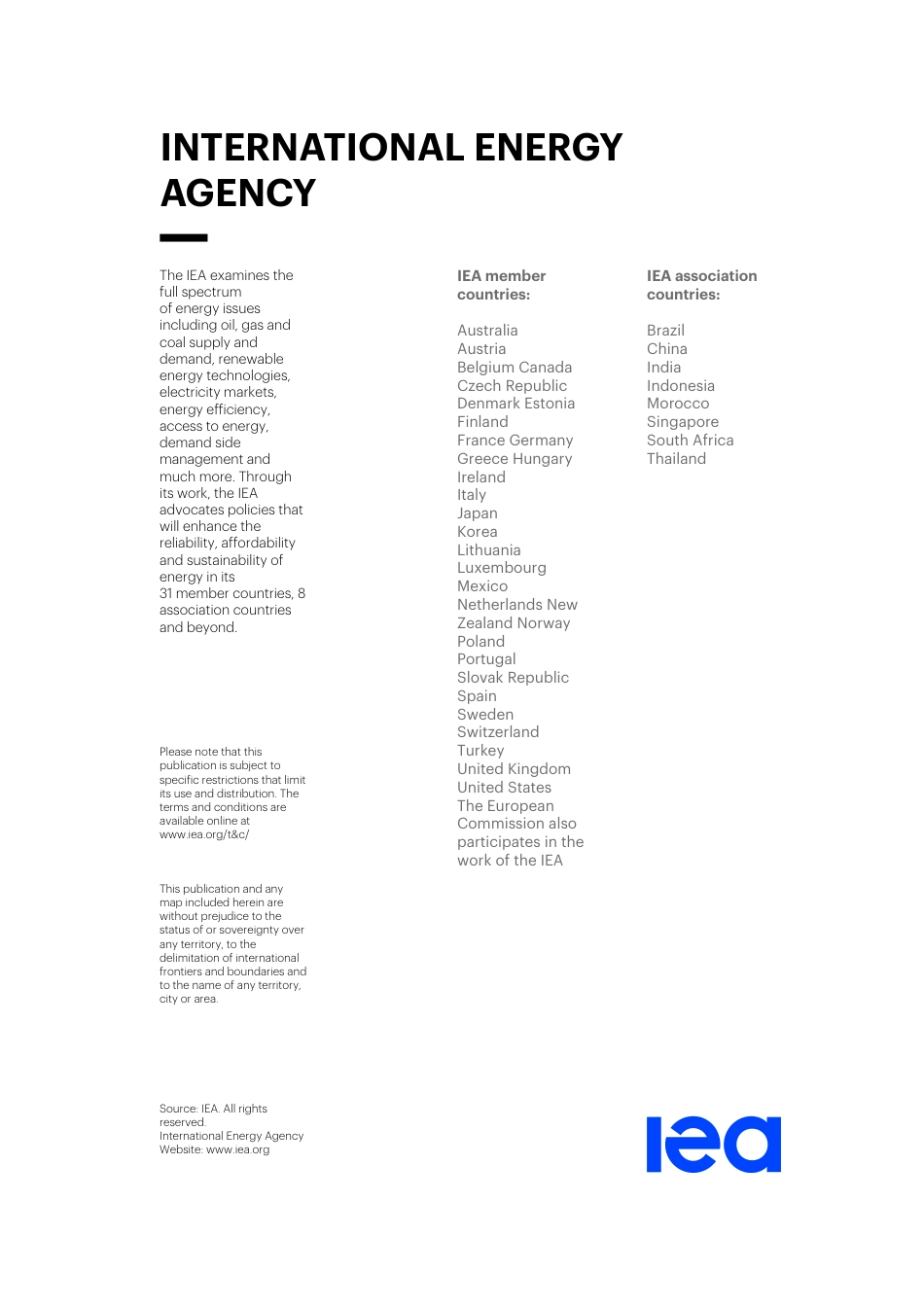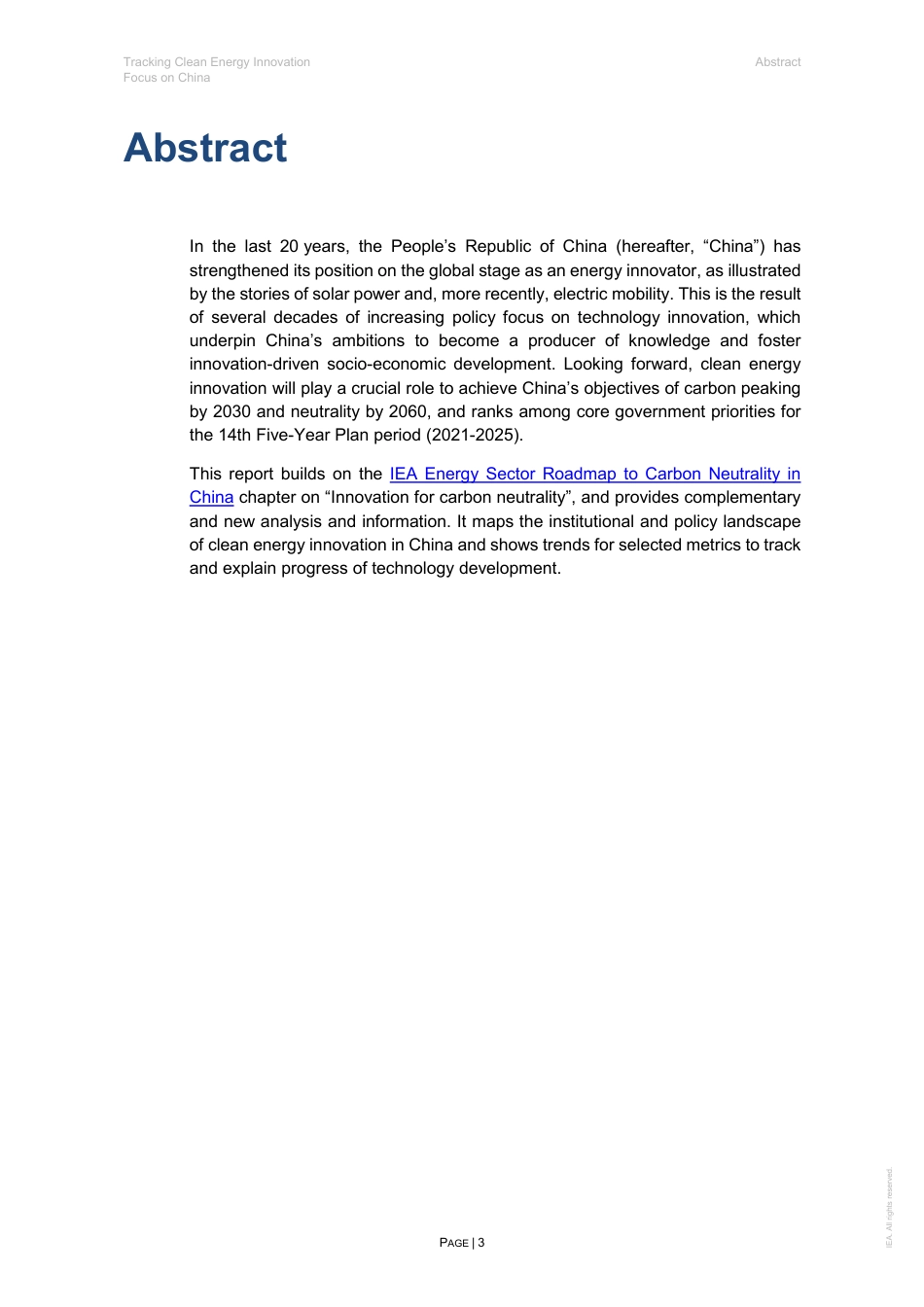Tracking Clean Energy InnovationFocus on ChinaThe IEA examines the full spectrum of energy issues including oil, gas and coal supply and demand, renewable energy technologies, electricity markets, energy efficiency, access to energy, demand side management and much more. Through its work, the IEA advocates policies that will enhance the reliability, affordability and sustainability of energy in its 31 member countries, 8 association countries and beyond.Please note that this publication is subject to specific restrictions that limit its use and distribution. The terms and conditions are available online at www.iea.org/t&c/This publication and any map included herein are without prejudice to the status of or sovereignty over any territory, to the delimitation of international frontiers and boundaries and to the name of any territory, city or area.Source: IEA. All rights reserved.International Energy Agency Website: www.iea.orgIEA member countries: Australia Austria Belgium CanadaCzech Republic Denmark EstoniaFinland France Germany Greece HungaryIreland ItalyJapanKoreaLithuania Luxembourg Mexico Netherlands New Zealand NorwayPoland Portugal Slovak Republic Spain Sweden Switzerland Turkey United Kingdom United StatesThe European Commission also participates in the work of the IEAIEA association countries:BrazilChinaIndiaIndonesiaMoroccoSingaporeSouth AfricaThailandINTERNATIONAL ENERGYAGENCYIEA. All rights reserved. Tracking Clean Energy Innovation Abstract Focus on China PAGE | 3 Abstract In the last 20 years, the People’s Republic of China (hereafter, “China”) has strengthened its position on the global stage as an energy innovator, as illustrated by the stories of solar power and, more recently, electric mobility. This is the result...



